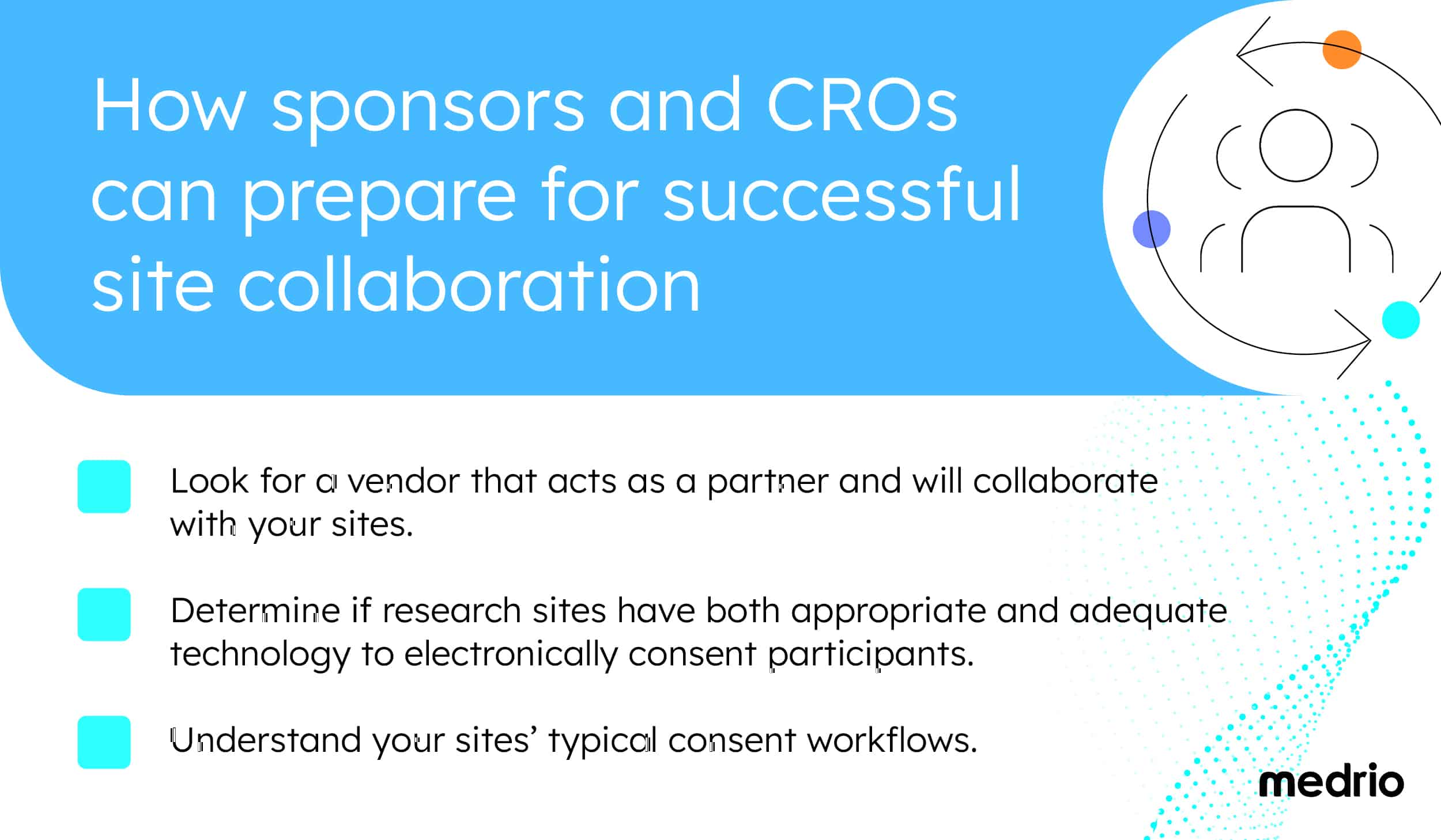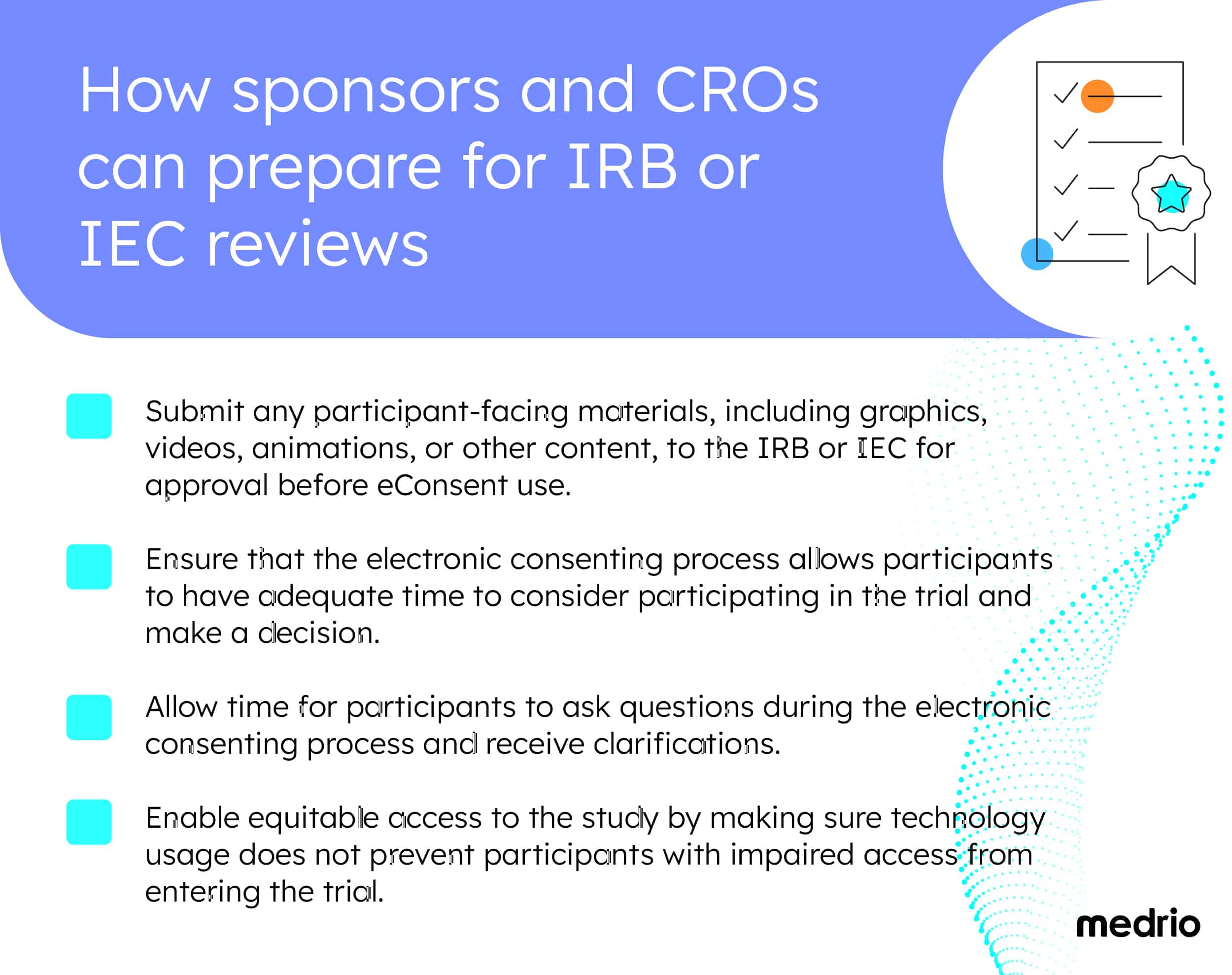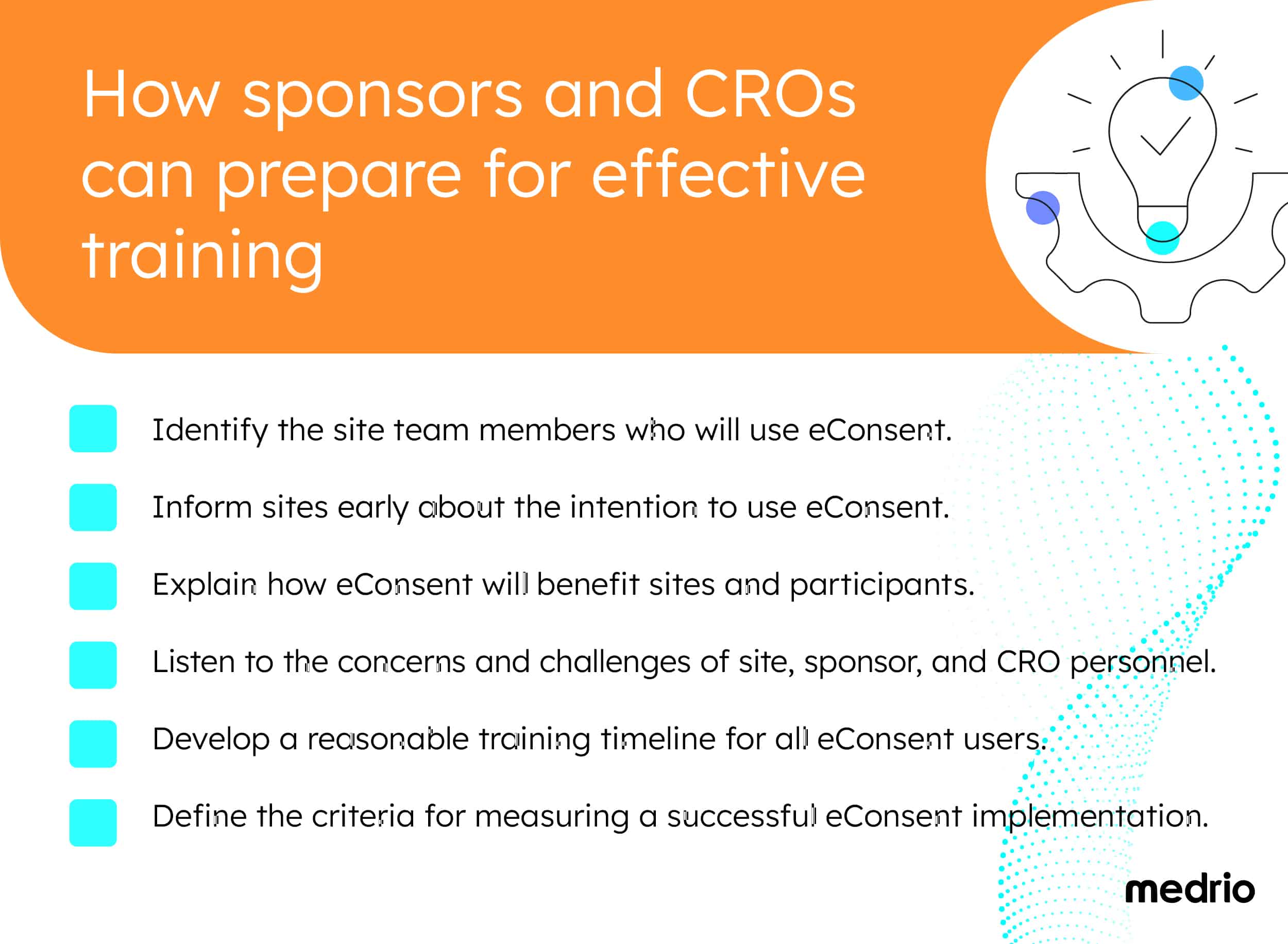Contributing Expert: Tina Caruana, eClinical Solutions Subject Matter Expert at Medrio
Providing electronic consent (eConsent) creates many benefits for sponsors, CROs, sites, and participants. However, without proper eConsent implementation processes and ongoing support, a smooth and sustained transition may be challenging.
Research site staff can feel overwhelmed by new technologies and processes. Since informed consent is vital to a trial’s success, implementing digital processes can be especially intimidating. Plus, a poorly executed implementation can increase the risk of sites reverting to paper processes.
Based on our lessons learned from numerous eConsent implementations, we recommend the following three best practices to support a smooth and sustained transition to eConsent:
Curious to learn how your peers are successfully using eConsent? Explore this success story.
Site Collaboration
For successful site adoption and implementation, sites should collaborate closely with their eConsent vendor. A supportive vendor will work to make sure the technology is a good fit for the site.
Collaboration should take place well before the informed consent build process begins. Discussions should happen as early as possible, ideally during the study planning stage.
When site staff share their perspectives and workflows with their vendor, they’re able to get customized help. It may be helpful for sites to share:
- Anticipated consenting workflows
- Signature requirements
- Study population details like age
Through partnership and collaboration, a vendor will better understand a site’s previous experience and specific workflows, like for re-consent and other processes. This understanding will create smoother implementation processes and support higher site adoption rates.

IRB/IEC Preparedness
For a successful transition to eConsent, compliance is critical.
Currently, there are no globally, harmonized eConsent regulations. Therefore, sites need to follow regional and country-specific guidelines. In addition, individual Institutional Review Boards (IRB) or Independent Ethics Committees (IEC) review requirements can vary.
The following are potential review requirements that individual IRBs or IECs may require:
- Paper Informed Consent Form (ICF) review
- Content review
- Platform review
Paper Informed Consent Form (ICF) review
This is a review of the paper ICF (pICF). Approval is given with the expectation that the content and language remain unchanged when displayed on the eConsent platform.
Content review
This is a more detailed review of the eConsent platform, including screenshots, wireframes, or other documentation. If such details are necessary, this information can be obtained directly from the vendor.
Platform review
This is a review of the eConsent platform in the same context as participants view it. This approach means they may want access to the system, including multimedia components such as audio or video files and hyperlinked content. Some eConsent vendors can provide system access through a “Test” environment to the IRB/IEC if requested.

Training for Sponsors, CROs, and Investigator Sites
Effective training is important for sponsors, CROs, and sites to successfully use eConsent. Therefore, all site personnel involved in the informed consent process need training to understand eConsent. Effective training should also ensure sites can address potential problems early.
Training is also critical for sponsor and CRO personnel. Some sponsors and CROs may like to create custom training tools, such as visuals or videos. These materials aim to enhance the understanding and usage of eConsent by internal staff and participating sites.
Below are a few field-tested tools that help create strong training programs:
- Use differentiated training methods
- Hold train-the-trainer sessions
- Practice with “mock” participants
Use differentiated training methods
Everyone learns differently. Using a variety of training tools to address unique learning styles helps to enhance retention and eConsent adoption. Training methods could include videos, written material, in-person sessions, or live, virtual sessions.
Hold train-the-trainer sessions
Lead or regional clinical research associates (CRAs) or clinical trial managers can receive workflow and eConsent training. Afterward, these trained representatives would then train individual site staff. The ‘trainers’ can also serve as internal point persons for troubleshooting, questions, and other site challenges.
Practice with “mock” participants
Mock visits are extremely helpful for hands-on eConsent training. Sites can have study teams and site staff practice consenting mock participants in a test environment to gain confidence using eConsent before the study starts.

Leveraging an Experienced eConsent Vendor for a Seamless Transition
Change can be hard. Among other benefits, working with an experienced eConsent vendor can help identify common site hurdles to eConsent adoption and prepare your team for a successful transition.
Ready to explore eConsent for your trials? Our expert team is ready to help. Connect with our team today.



